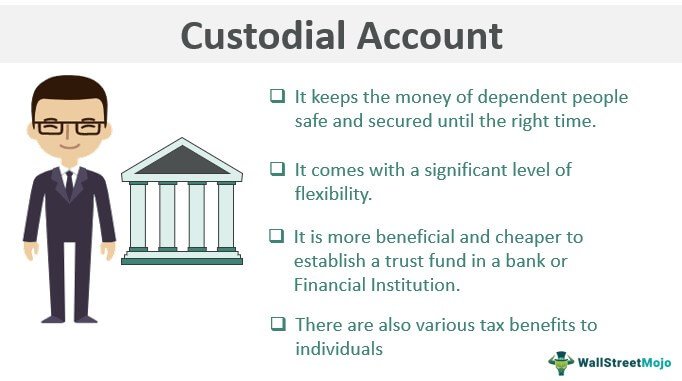Tax shelters are a topic that often sparks curiosity and raises questions about their legality. So, what exactly is a tax shelter and what does its legality entail? In simple terms, a tax shelter is a strategy or investment vehicle that helps individuals or businesses reduce their tax liabilities. However, it is crucial to navigate the fine line between legitimate tax planning and illegal tax evasion. Understanding the legal boundaries of tax shelters is essential to ensure compliance with tax laws and avoid potential consequences. Let’s delve into the fascinating world of tax shelters and explore their legality in more detail.
What is a Tax Shelter and its Legality
Tax shelters have been a topic of intrigue and controversy for years. Many individuals and businesses seek ways to minimize their tax liabilities legally. In this article, we will delve into the concept of tax shelters, explore their legality, and provide insights into how they work. Let’s understand the basics first.
Understanding Tax Shelters
Tax shelters are legal strategies or financial arrangements used by individuals and businesses to reduce their taxable income and ultimately pay less in taxes. These arrangements take advantage of specific provisions in tax laws to exploit loopholes and deductions. However, it is crucial to distinguish between legal tax shelters and illegal tax evasion schemes.
While the term “tax shelter” may sound negative or even illegal, it actually encompasses various strategies approved by tax authorities. These strategies typically involve investments or business activities that generate tax deductions, credits, or other legally recognized benefits. Let’s explore some common types of tax shelters.
Types of Tax Shelters
1. Real Estate Investments: Real estate investments, such as rental properties, can serve as tax shelters. By utilizing depreciation deductions, property owners can deduct a portion of their property’s value as an expense. This reduces their taxable income and subsequently their tax liability.
2. Retirement Accounts: Retirement accounts, such as individual retirement accounts (IRAs) and 401(k) plans, offer tax advantages. Contributions to these accounts are often tax-deductible, and the earnings grow tax-free until withdrawal. This allows individuals to defer taxes until retirement when they may be in a lower tax bracket.
3. Municipal Bonds: Investing in municipal bonds can provide tax-free income. Interest earned from these bonds is typically exempt from federal income taxes and sometimes even from state and local taxes, particularly if they are issued by the investor’s home state or municipality.
4. Charitable Contributions: Donations to qualified charitable organizations can be tax-deductible. By giving to charities, individuals and businesses not only support meaningful causes but also reduce their taxable income.
5. Business Expenses and Deductions: Businesses can utilize various deductions and expenses to lower their taxable income. These may include deductions for operating expenses, research and development costs, employee benefits, and more.
The Legality of Tax Shelters
Tax shelters, when used legally, comply with all applicable tax laws and regulations. They are an integral part of tax planning and can help individuals and businesses optimize their tax positions. However, it is essential to distinguish between legal tax planning and illegal tax evasion.
Legal Tax Planning
Legal tax planning involves taking advantage of tax laws to minimize tax liabilities within the boundaries of the law. This often includes using tax shelters to reduce taxable income or maximize deductions. Tax authorities recognize the importance of tax planning and have established rules and regulations to govern its usage. As long as tax shelters are structured and operated within these rules, they are considered legal.
Illegal Tax Evasion
Tax evasion, on the other hand, involves intentionally evading tax obligations through illegal means, such as concealing income, inflating expenses, or maintaining unreported offshore accounts. Tax evasion is a serious crime and can lead to severe penalties, including fines and imprisonment. It is important to differentiate between legal tax planning and illegal tax evasion to avoid legal repercussions.
Key Factors Determining Legality
To determine the legality of a tax shelter, several key factors come into play. Understanding these factors can help individuals and businesses ensure they are engaging in legal tax practices:
1. Disclosure and Compliance: Taxpayers must disclose all relevant information accurately and comply with tax laws and regulations. Failing to disclose income or misrepresenting information can lead to legal troubles.
2. Business Purpose: Tax shelters must have a legitimate business purpose beyond just tax avoidance. The primary purpose of the activity or investment should not solely revolve around tax savings.
3. Substance Over Form: Tax authorities focus on the economic substance of transactions rather than their legal form. If a transaction lacks economic substance or merely serves to create tax benefits without any real economic impact, it may raise suspicions of tax evasion.
4. Consistency with Tax Laws: Tax shelters must adhere to the specific provisions of tax laws. Engaging in activities that circumvent the intent of the law or exploit unintended loopholes can be deemed illegal.
5. Professional Advice: Seeking professional advice from tax experts, such as accountants or tax attorneys, is recommended when considering tax shelters. They can provide guidance on structuring tax-efficient strategies within legal boundaries.
Tax shelters, when used legally and responsibly, can be valuable tools for minimizing tax liabilities. They allow individuals and businesses to leverage legitimate provisions within tax laws to optimize their financial positions. However, it is crucial to ensure that tax shelters are structured and operated in compliance with all applicable laws and regulations to avoid illegal tax evasion. By understanding the distinction between legal tax planning and illegal tax evasion, individuals and businesses can navigate the complex world of tax shelters while staying on the right side of the law.
Use Your Business as a Tax Shelter
Frequently Asked Questions
Frequently Asked Questions (FAQs)
What is a tax shelter and its legality?
A tax shelter is a legal technique used by individuals or businesses to reduce their taxable income and, subsequently, their tax liability. It involves taking advantage of tax deductions, credits, exemptions, or loopholes provided by the tax laws to minimize the amount of income subject to taxation. While tax shelters are legal, there are specific guidelines set by tax authorities to ensure taxpayers do not abuse these strategies to evade taxes.
Are all tax shelters legal?
Not all tax shelters are considered legal. Some tax shelters exploit loopholes or engage in fraudulent activities to manipulate tax laws, which is illegal. However, there are numerous legitimate tax shelters available that individuals and businesses can make use of to reduce their tax liability within the boundaries set by the law.
How do tax shelters work?
Tax shelters work by employing various strategies or investments that generate deductions, credits, or losses to offset taxable income. These may include investing in specific industries, real estate partnerships, retirement plans, or utilizing tax-exempt bonds. The purpose is to reduce the overall taxable income and subsequently lower the tax liability.
Can individuals use tax shelters?
Yes, both individuals and businesses can use tax shelters to minimize their tax liability. Individual taxpayers often utilize strategies such as contributing to retirement accounts, taking advantage of education credits, or investing in tax-deferred savings plans to reduce their taxable income.
What are some popular forms of tax shelters?
Some popular forms of tax shelters include individual retirement accounts (IRAs), 401(k) plans, municipal bonds, real estate investments, and tax-deductible contributions to charitable organizations. These strategies help individuals and businesses reduce their taxable income or defer taxes to a later date.
Are tax shelters risky?
While tax shelters can be beneficial for reducing tax liability, some may involve certain risks. Investments in certain industries or partnerships may be subject to market fluctuations and may not always yield expected returns. It is essential to carefully consider the risks associated with each tax shelter before utilizing them.
What are the consequences of using illegal tax shelters?
Using illegal tax shelters can have severe consequences. Tax authorities actively monitor and scrutinize tax shelter activities, and if found to be engaging in fraudulent practices or evading taxes, individuals or businesses may face penalties, fines, and even criminal charges. It is crucial to ensure compliance with tax laws when utilizing tax shelters.
How can one determine the legality of a tax shelter?
To determine the legality of a tax shelter, individuals or businesses should consult qualified tax professionals or financial advisors who have expertise in tax planning. They can provide guidance and evaluate the legitimacy and potential risks associated with specific tax shelter strategies within the bounds of tax laws.
Final Thoughts
A tax shelter is a legal strategy used by individuals or businesses to minimize their tax liability. These shelters take advantage of various provisions in the tax code to reduce taxable income, defer taxes, or claim deductions. It is important to note that while tax shelters are legal, not all aggressive tax planning strategies qualify as tax shelters. The legality of a tax shelter depends on compliance with existing tax laws. By understanding what constitutes a tax shelter and its legality, individuals and businesses can make informed decisions about their tax planning strategies.


